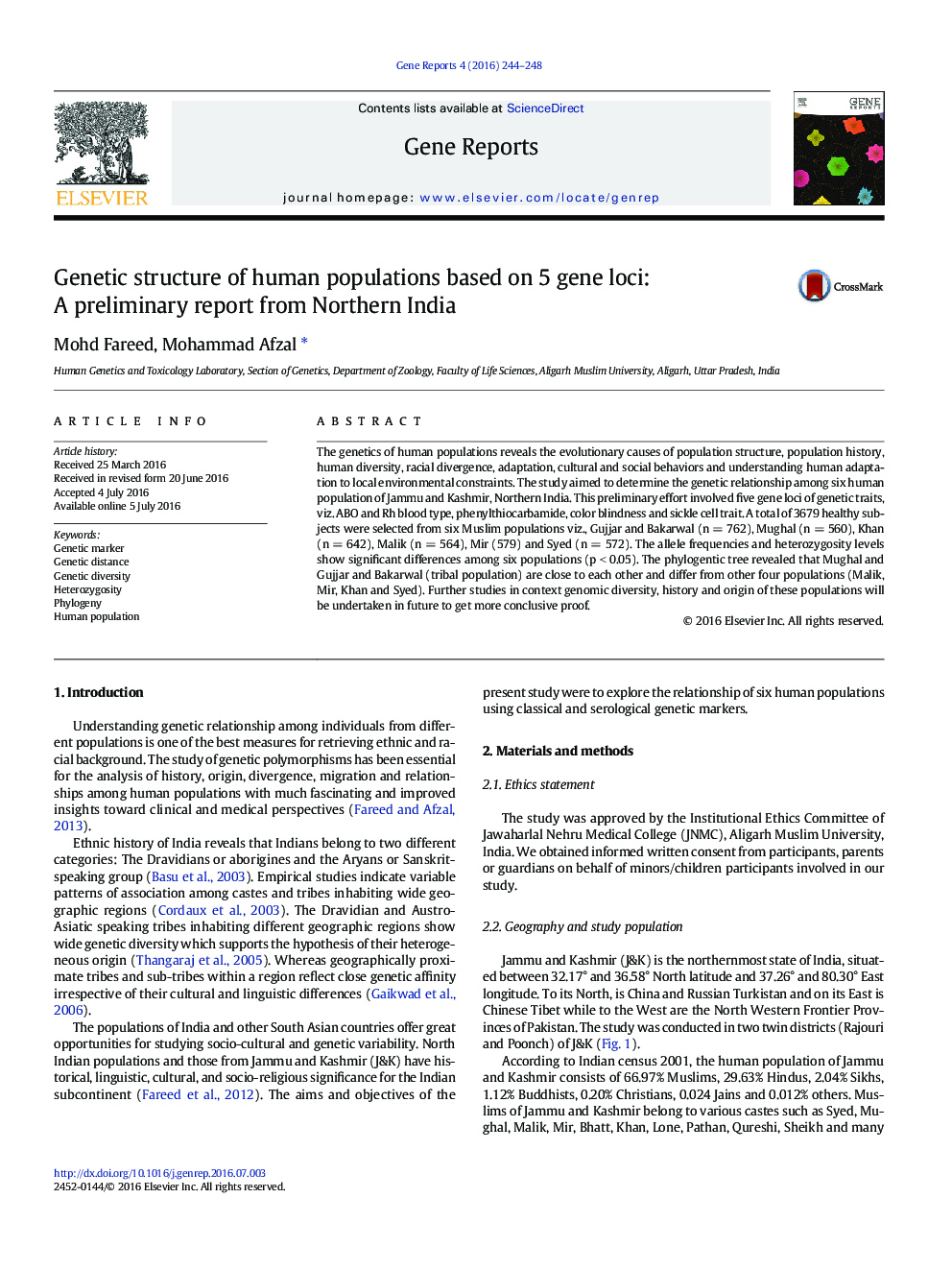| کد مقاله | کد نشریه | سال انتشار | مقاله انگلیسی | نسخه تمام متن |
|---|---|---|---|---|
| 2820508 | 1570080 | 2016 | 5 صفحه PDF | دانلود رایگان |
• Human population diversity involves several evolutionary mechanisms, shaping huge phenotypic variation.
• Our study presents significant differences for allele frequency and heterozygosity among six populations.
• The phylogentic tree based on genetic distances extracted from 5 gene loci, among six human populations provides the relationship among these populations.
The genetics of human populations reveals the evolutionary causes of population structure, population history, human diversity, racial divergence, adaptation, cultural and social behaviors and understanding human adaptation to local environmental constraints. The study aimed to determine the genetic relationship among six human population of Jammu and Kashmir, Northern India. This preliminary effort involved five gene loci of genetic traits, viz. ABO and Rh blood type, phenylthiocarbamide, color blindness and sickle cell trait. A total of 3679 healthy subjects were selected from six Muslim populations viz., Gujjar and Bakarwal (n = 762), Mughal (n = 560), Khan (n = 642), Malik (n = 564), Mir (579) and Syed (n = 572). The allele frequencies and heterozygosity levels show significant differences among six populations (p < 0.05). The phylogentic tree revealed that Mughal and Gujjar and Bakarwal (tribal population) are close to each other and differ from other four populations (Malik, Mir, Khan and Syed). Further studies in context genomic diversity, history and origin of these populations will be undertaken in future to get more conclusive proof.
Figure optionsDownload as PowerPoint slide
Journal: Gene Reports - Volume 4, September 2016, Pages 244–248
